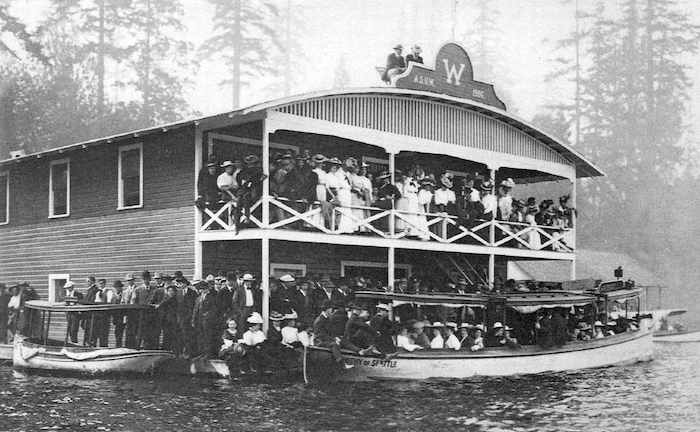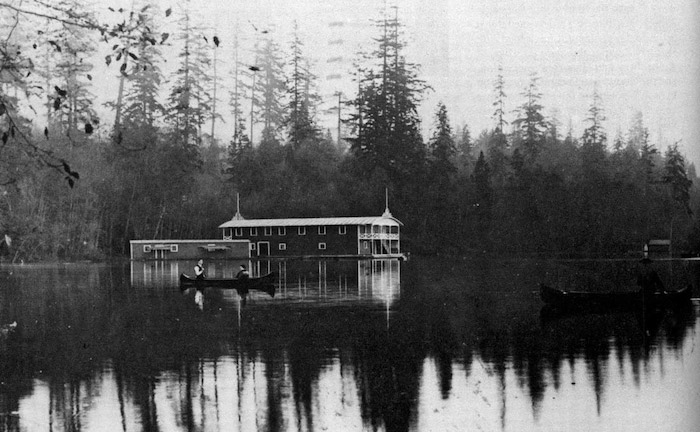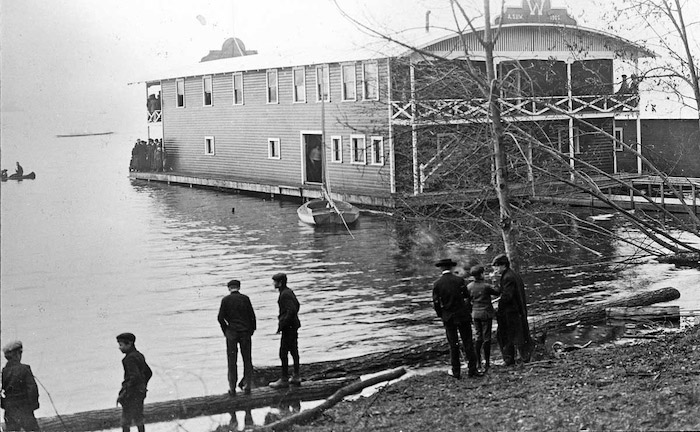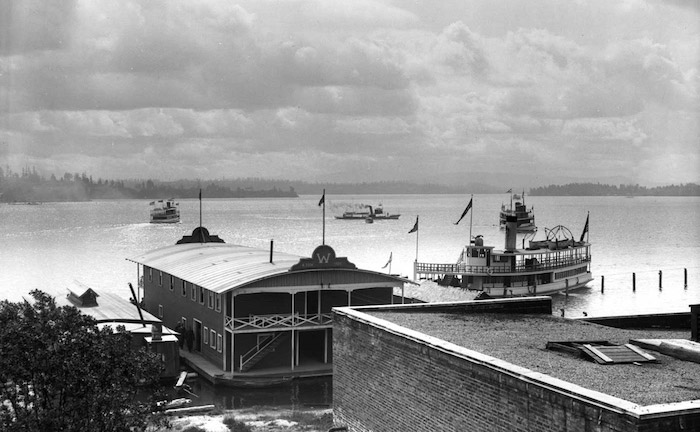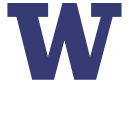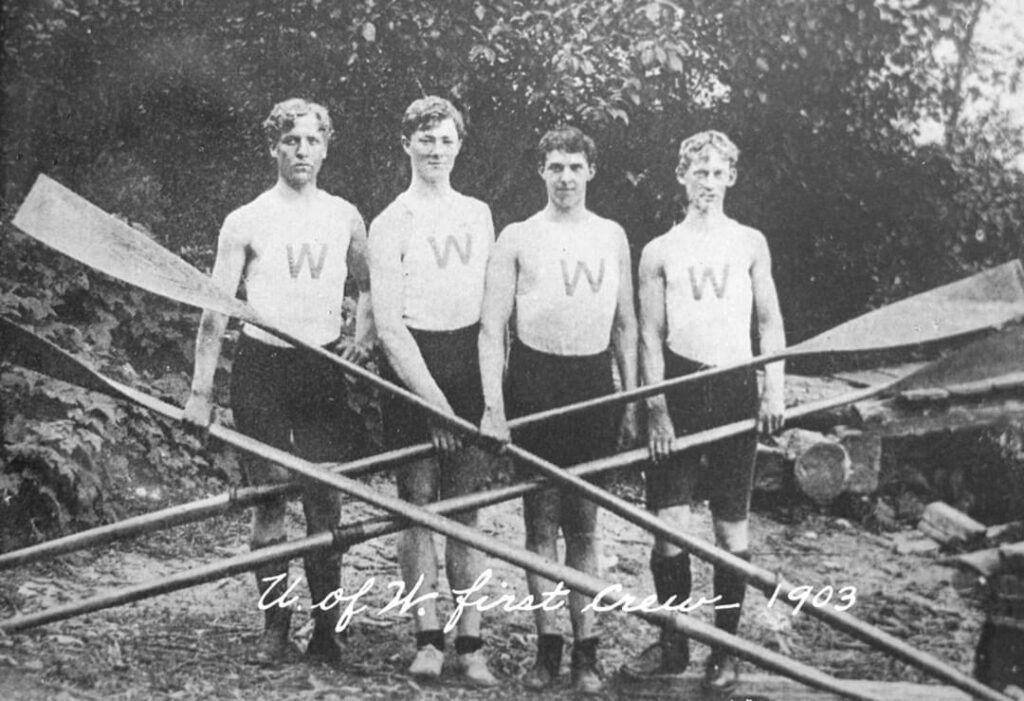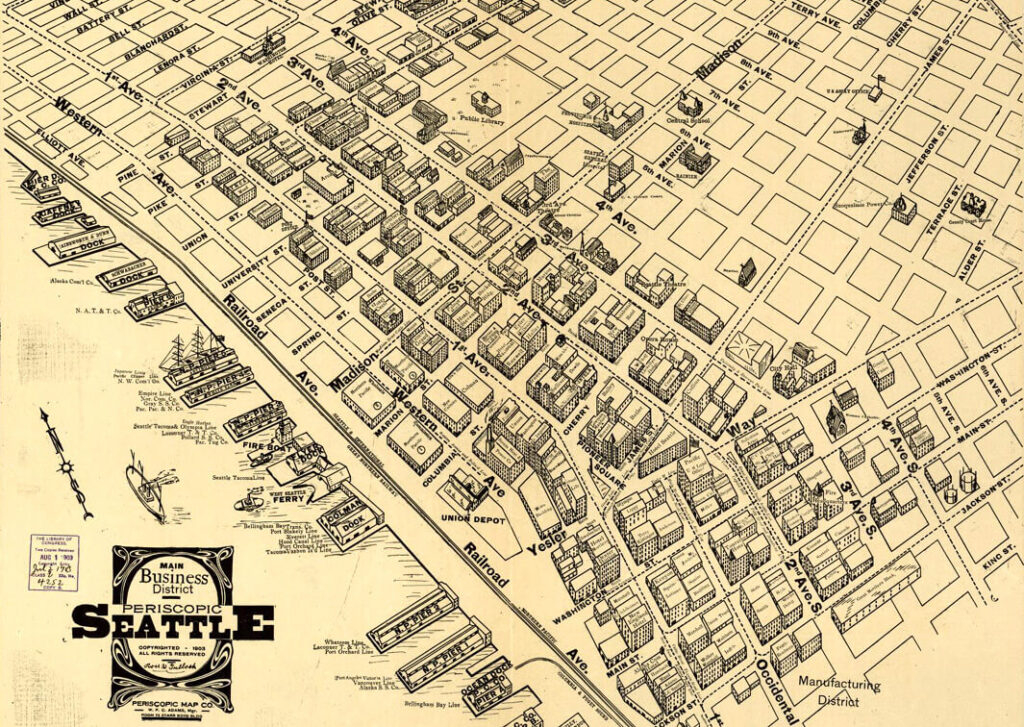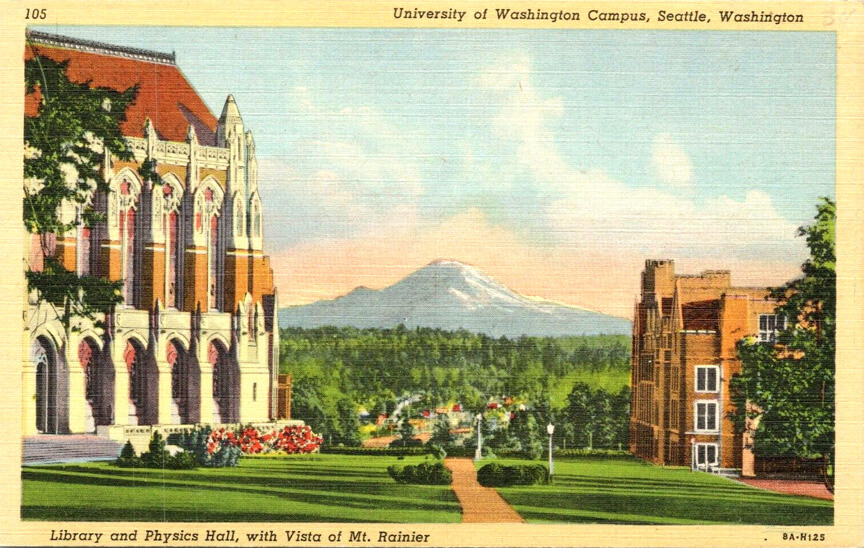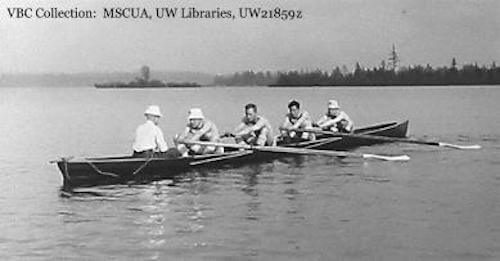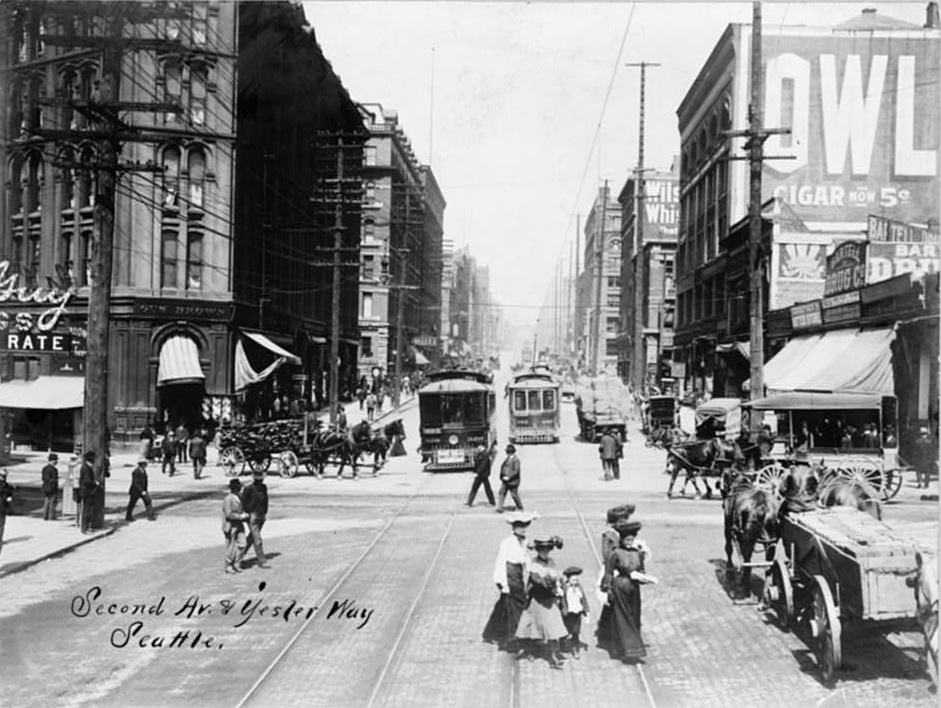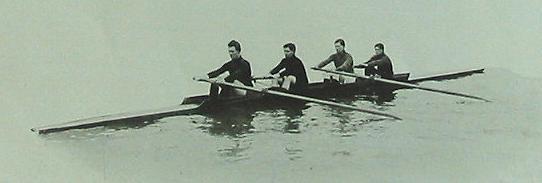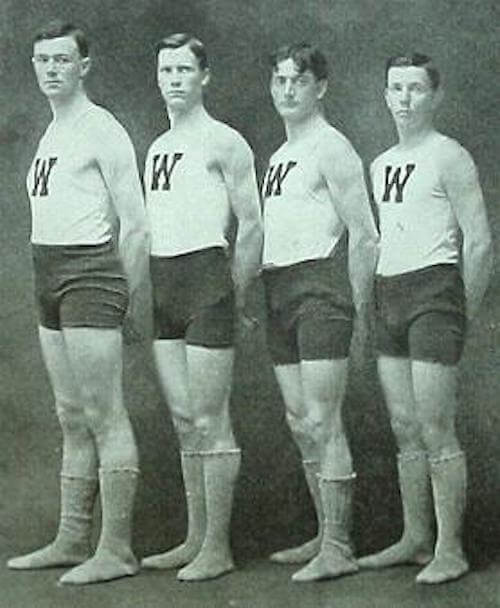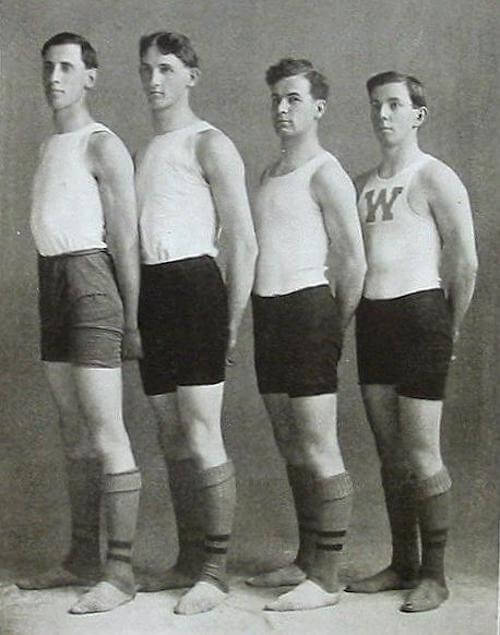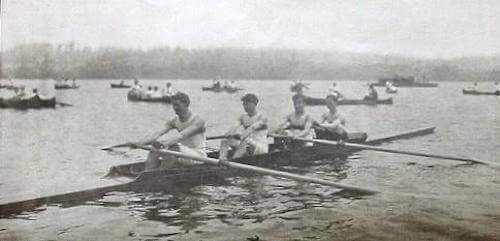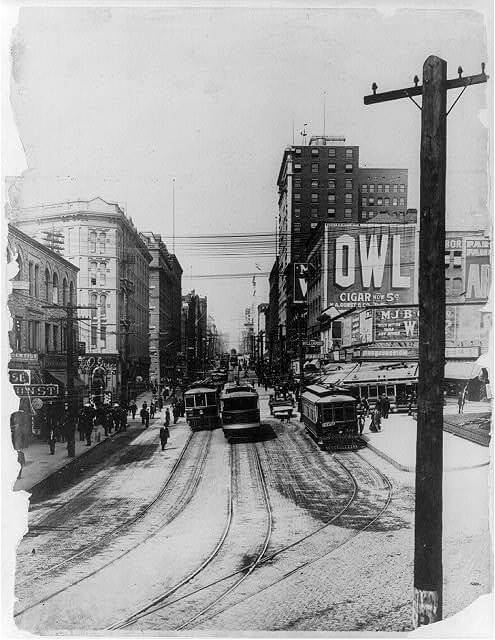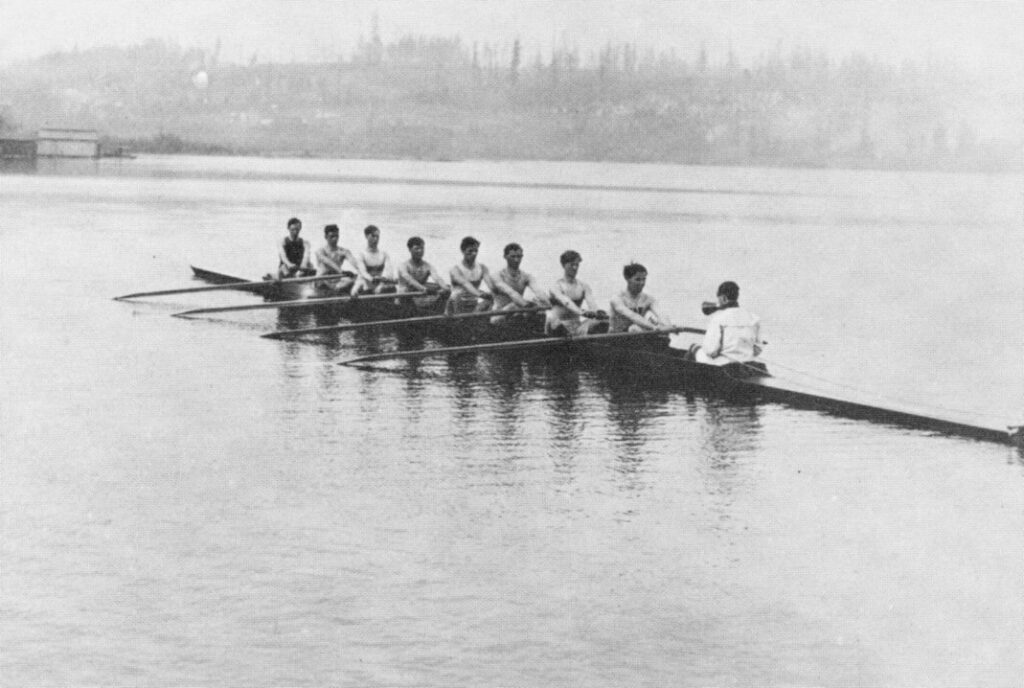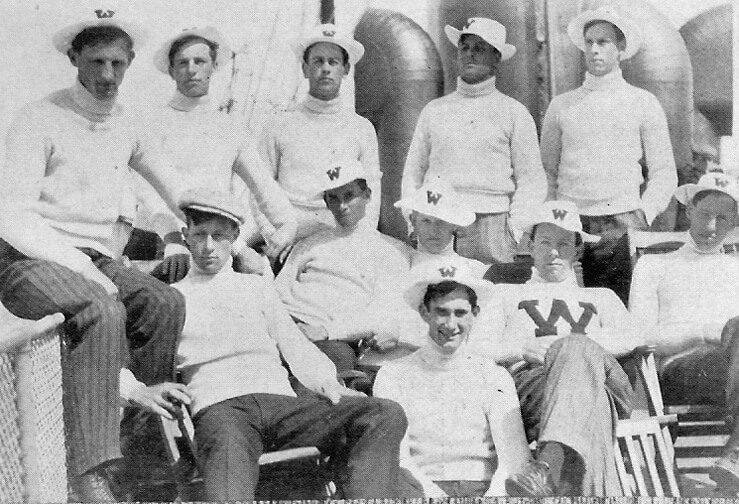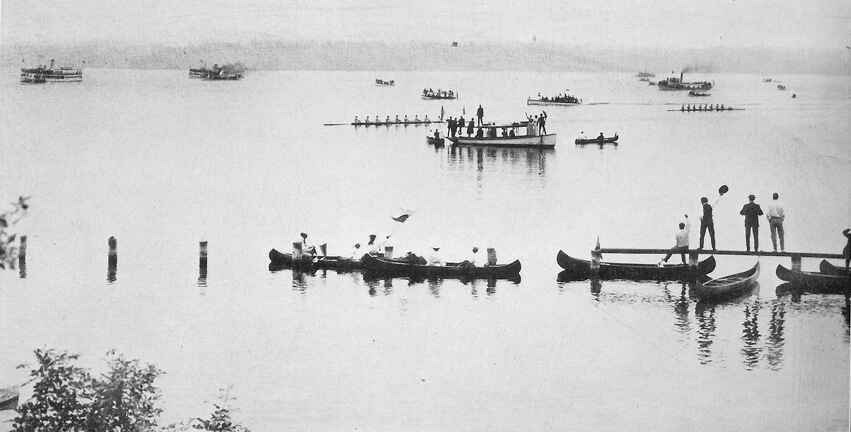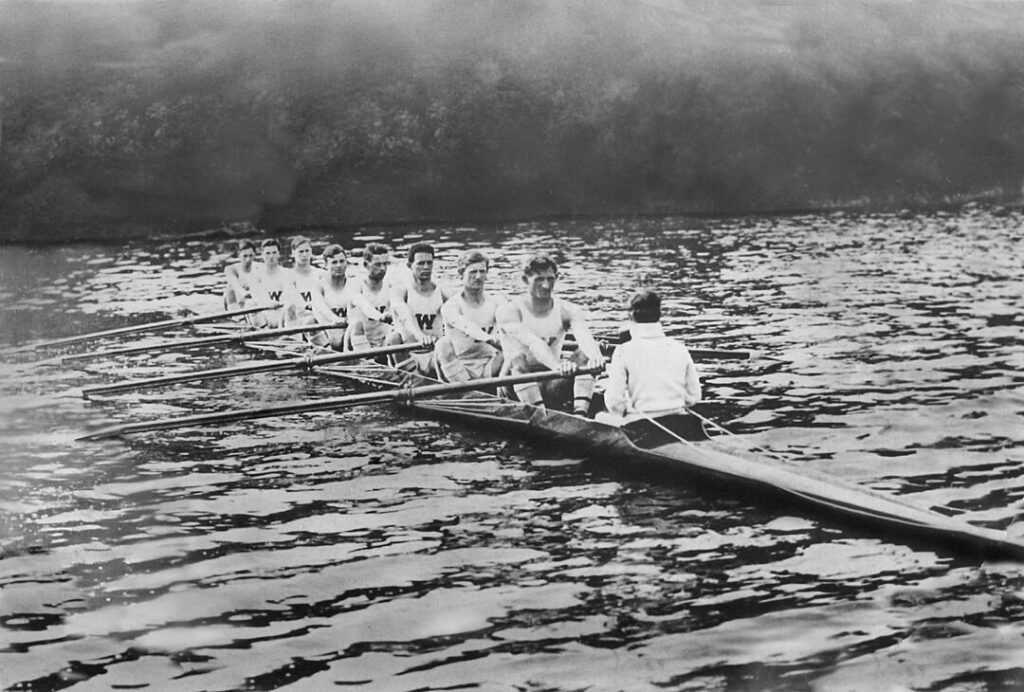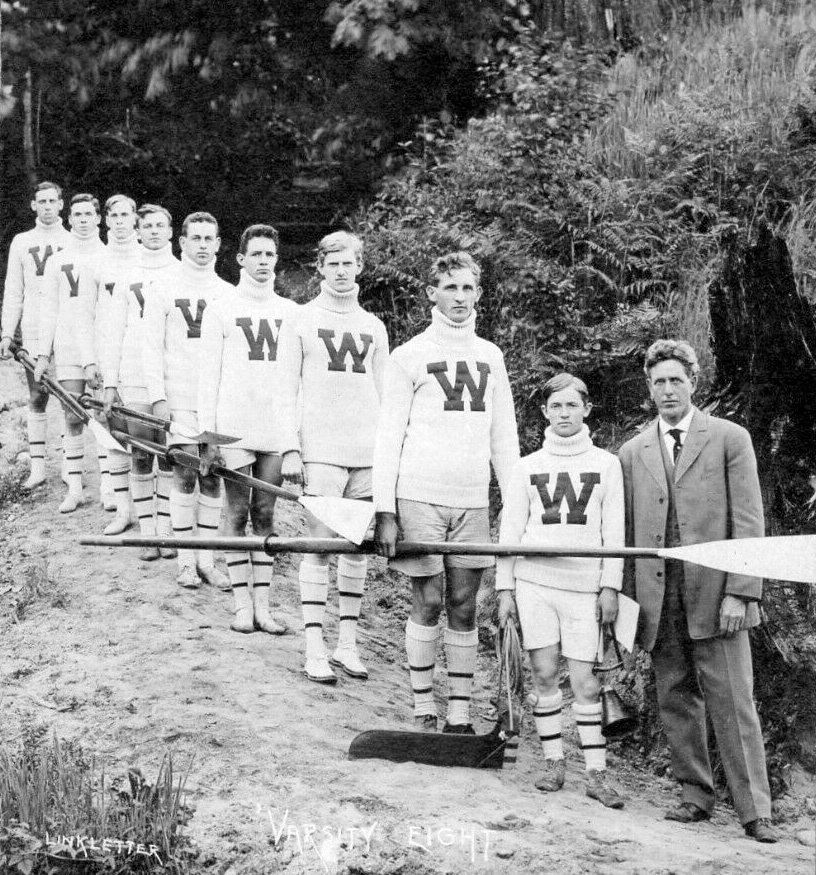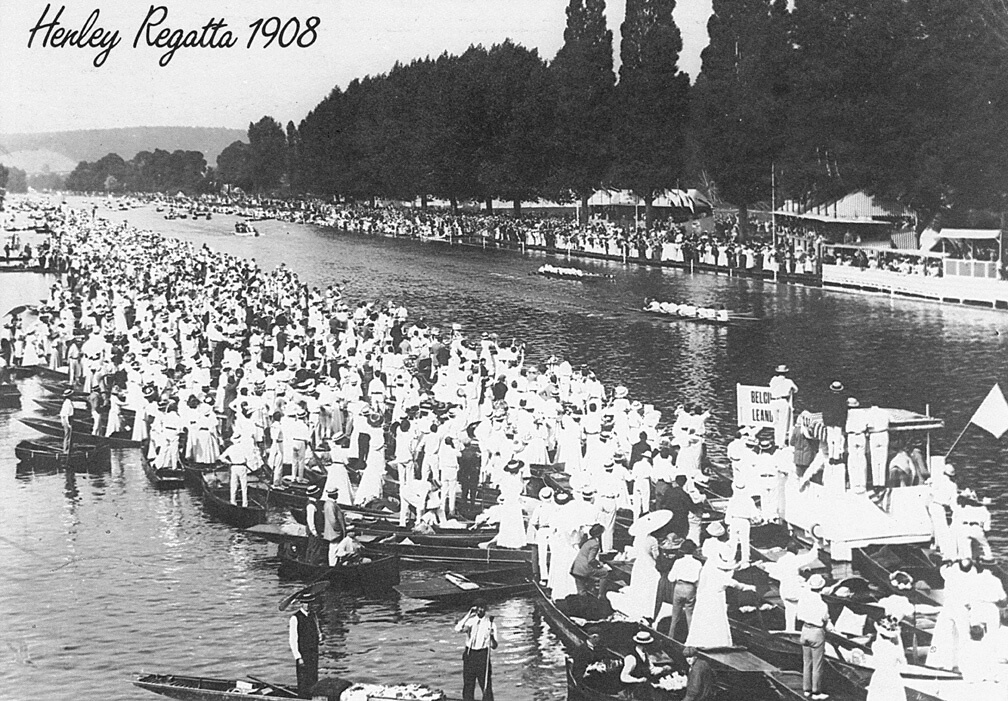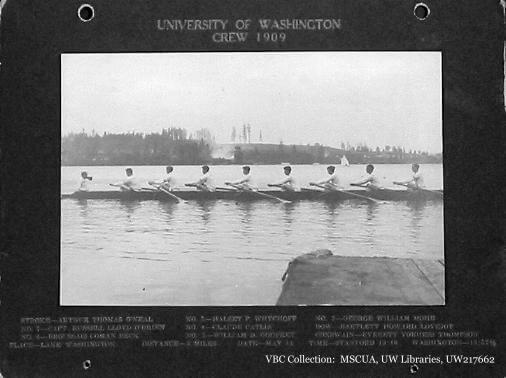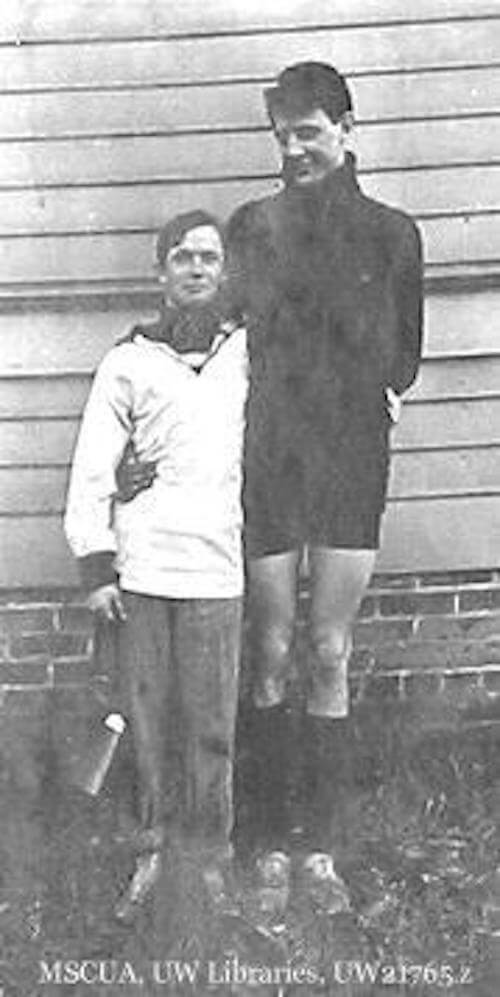Men's Crew:
1900-1909
Rowing was a natural sport for the new campus located on the shores of Lake Washington and the students and citizens of Seattle knew it. At a time when average priorities included getting ice for the cold box or visiting the farrier, the students were nonetheless successful at convincing the local business community to support a rowing program at the University.
We start our history in 1903, the year of the first intercollegiate regatta entered by a Washington men’s crew. Prior to that, however, were a few years when the students were introduced to the sport, competed among themselves, and built their first boathouse.
A good article describing those times can be found at HistoryLink, a site that details the history of the Seattle/King County area. This article covers the generosity of E.F. Blaine and the original boatbuilding by Henry W. Stone, as well as the cutting of trees on Union Bay by the students to build their first boathouse.
